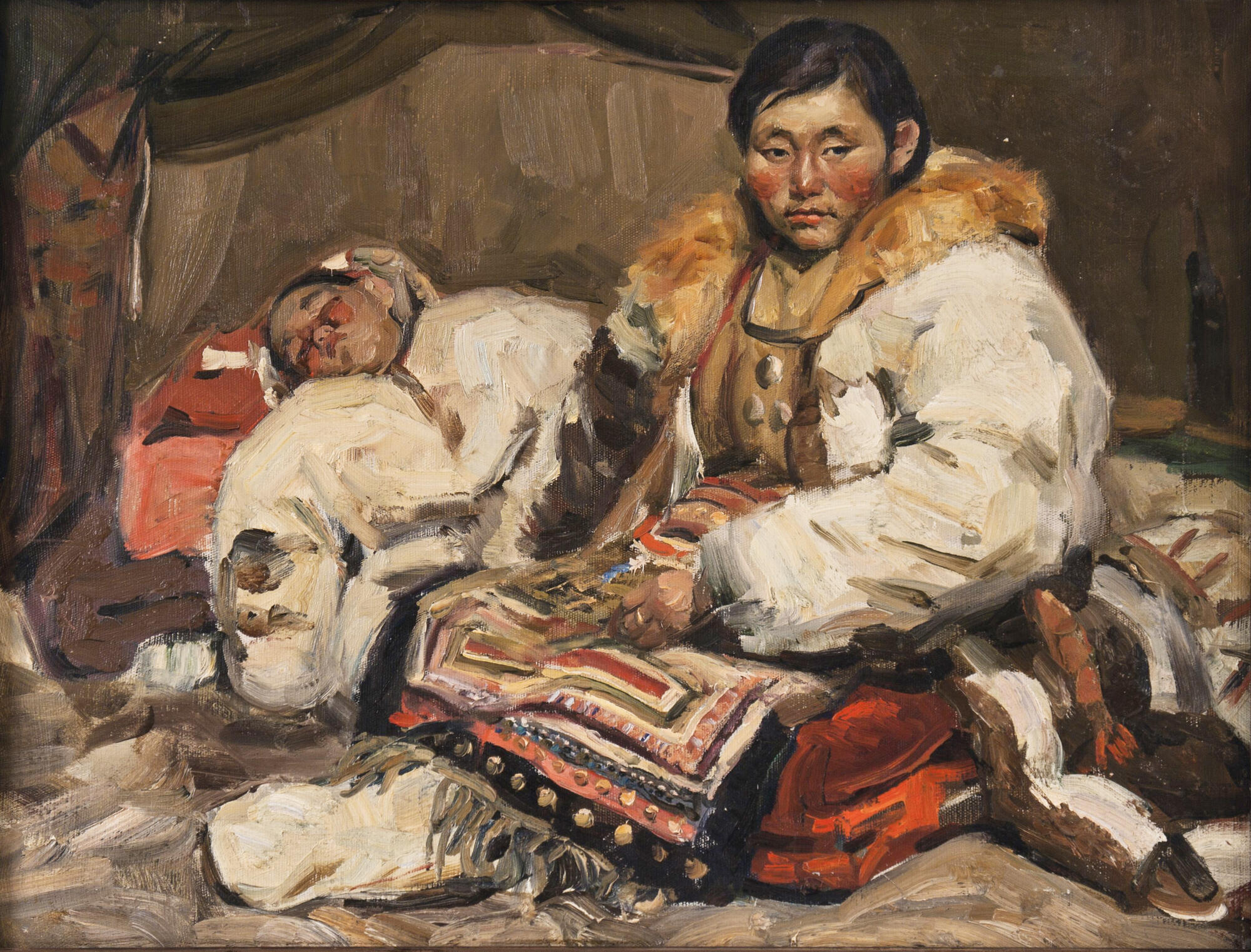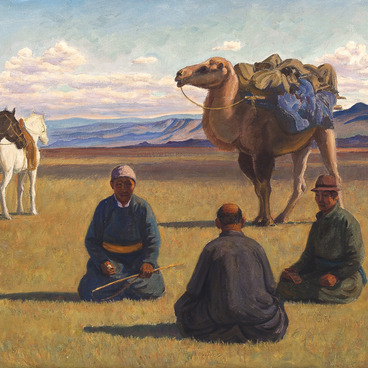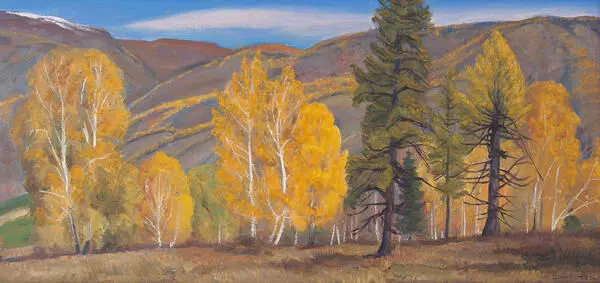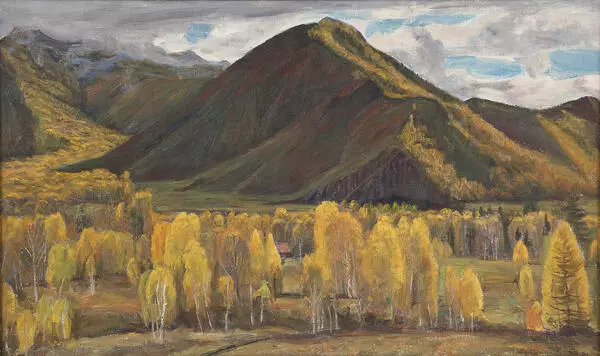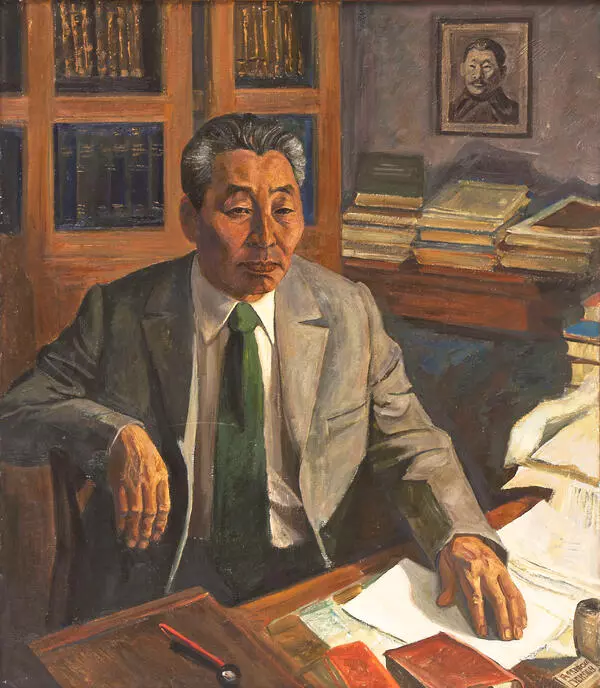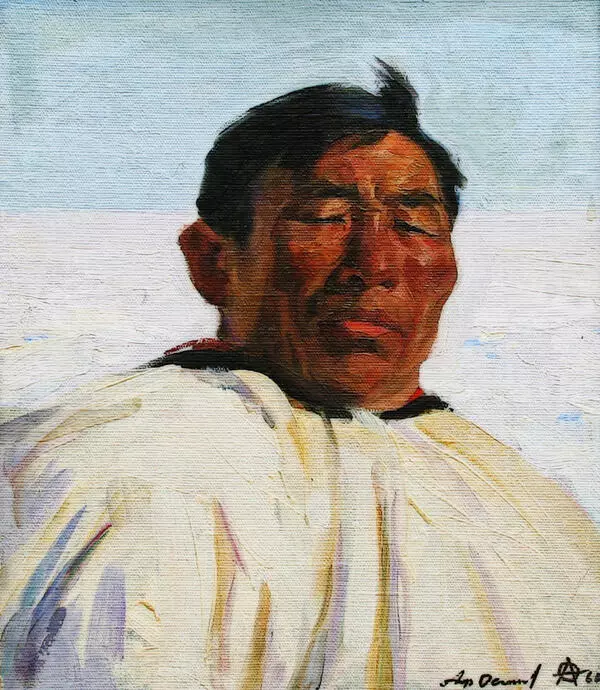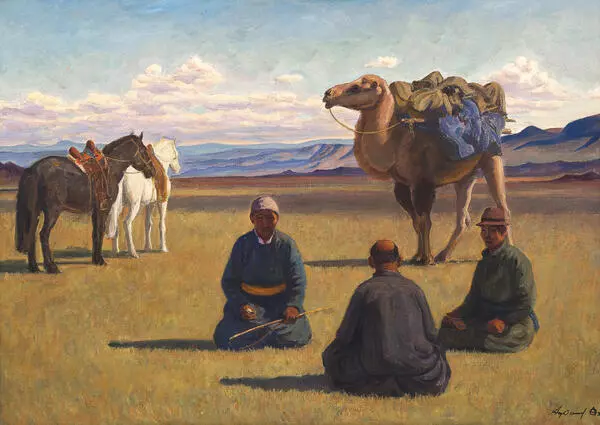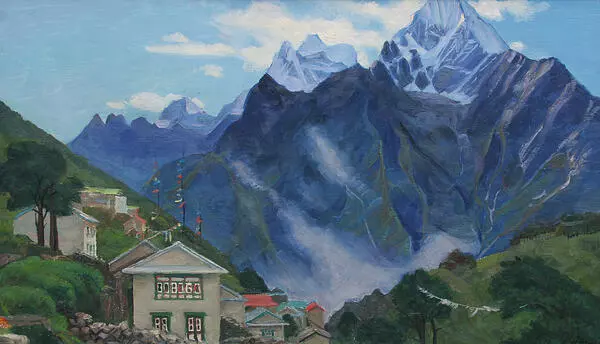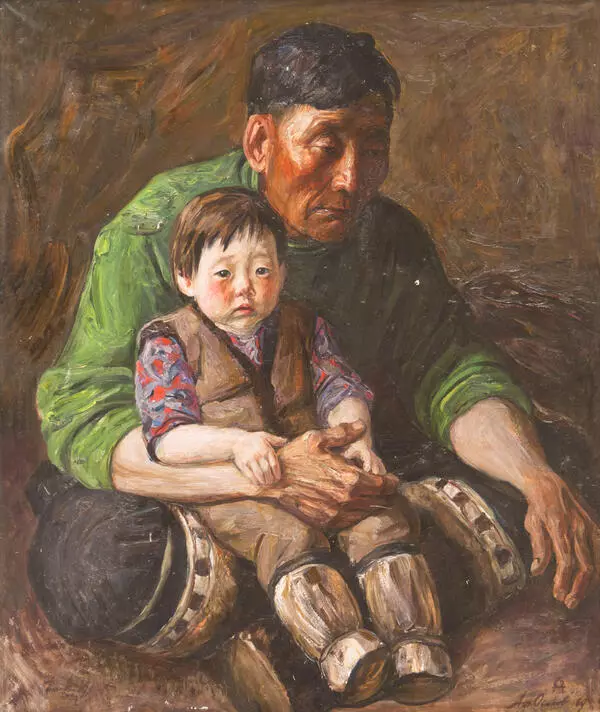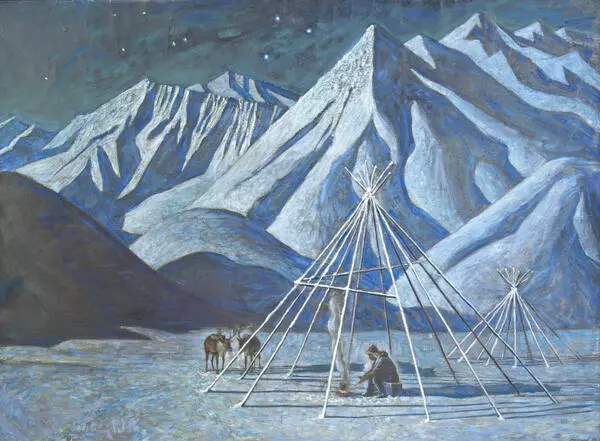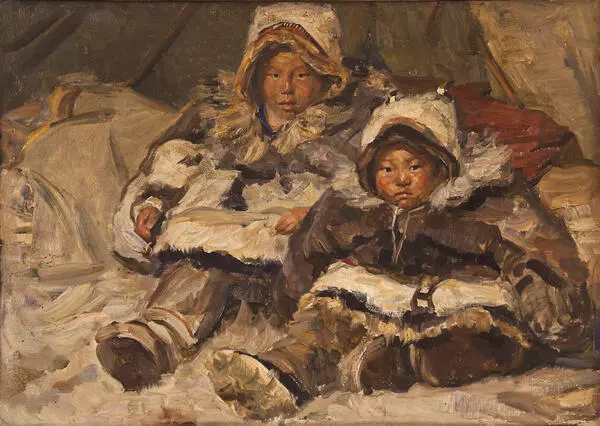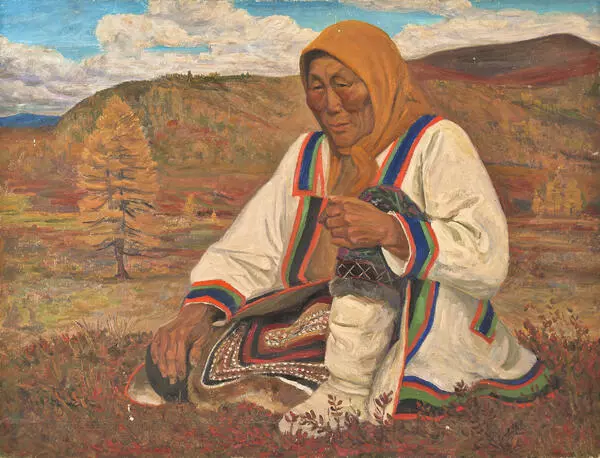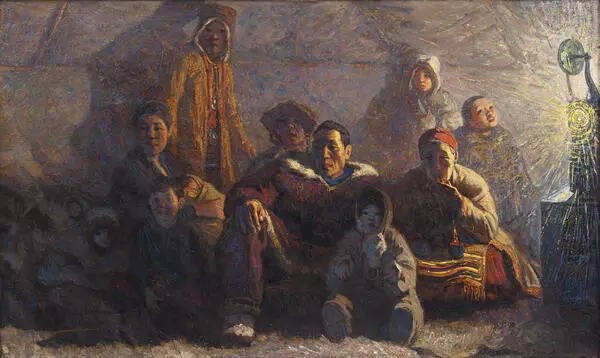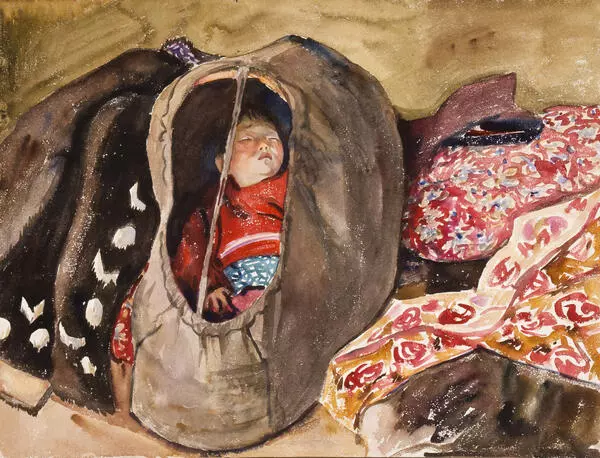Afanasy Osipov is a Yakut painter. He was born on February 28, 1928 in Gorny Ulus. He graduated from the Yakut Cooperative Technical School in 1945, and then went to Moscow. There he entered the Moscow Secondary Art School at the Moscow State Academic Art Institute named after V.I. Surikov, and then at the institute itself. After graduating from the Institute, Afanasy Osipov returned to his homeland and worked as a teacher at the Yakut Art School. At the same time, he participated in the republican, all-union, and foreign exhibitions. He became a member of the Union of Artists of Russia, and since 1956, he became a member of the Board of the Union of Artists of Yakutia. Afanasy Nikolaevich’s organizational and professional activities helped him enter the circle of leading Soviet artists. The painter has always been able to combine a rich social life with creativity. In April 1958, together with the Yakut poet Semyon Danilov, Afanasy Osipov went to the remote village of Andryushkino in the Nizhnekolymsky District and visited the reindeer herders’ camp. The artist recalled how they flew on an Il-14 plane over the mountains of Ust-Nera, the vast expanses of Yakutia. This was the first and therefore unforgettable trip to the tundra. At that time, the artist created cycles of portraits of reindeer herders and Northern landscapes. Among them are ‘Reindeer Herder’, ‘Chukcha Shepherd’, ‘Old Even Woman’, ‘Kostya and Styopa’, ‘Andryusha’, and other works.
In the painting ‘In Yaranga’, Osipov focuses the viewer’s attention on a moment of mystery in the life of a mother and child. The mother puts the child to bed after a hard day.
Yaranga is a portable dwelling of the Northern peoples. The yaranga frame is assembled from light wooden poles in the form of a slightly inclined wall and a cone or dome above it. Unlike portable yarangas, a stationary yaranga has a central pole or tripod supporting a conical roof. Some yarangas peak slightly shifted to the North. The top of the frame is covered with deer or walrus skins, and in summer - with a tarpaulin. On average, a normal-sized yaranga requires about 50 skins. Outside, the yaranga is tied with belts with stones tied to them.
The painting was created from nature and is interesting for its uninhibited, bold, and broad style of painting, as well as artistic mastery of technique. The work was made while traveling with reindeer herders on the Lower Kolyma in the Olersk Tundra near the village of Andryushkino.
In the painting ‘In Yaranga’, Osipov focuses the viewer’s attention on a moment of mystery in the life of a mother and child. The mother puts the child to bed after a hard day.
Yaranga is a portable dwelling of the Northern peoples. The yaranga frame is assembled from light wooden poles in the form of a slightly inclined wall and a cone or dome above it. Unlike portable yarangas, a stationary yaranga has a central pole or tripod supporting a conical roof. Some yarangas peak slightly shifted to the North. The top of the frame is covered with deer or walrus skins, and in summer - with a tarpaulin. On average, a normal-sized yaranga requires about 50 skins. Outside, the yaranga is tied with belts with stones tied to them.
The painting was created from nature and is interesting for its uninhibited, bold, and broad style of painting, as well as artistic mastery of technique. The work was made while traveling with reindeer herders on the Lower Kolyma in the Olersk Tundra near the village of Andryushkino.
